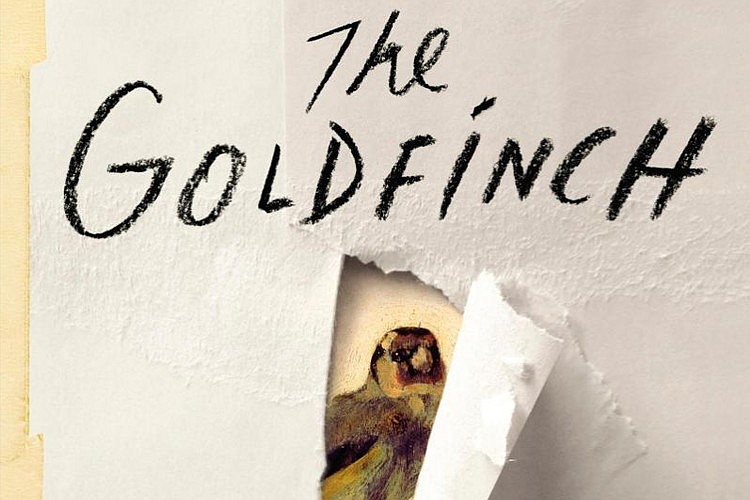- April 30, 2025
-
-
Loading

Loading

I once sat in front of a J.M.W. Turner painting for a good hour — the play of light on light, a glint on the sea, a nostalgic yellow dappling prismatic thunderheads. Something happens in your chest — a tightening or a loosening — when you witness a beautiful thing. I was reminded of this elusive pleasure while reading “The Goldfinch,” Donna Tartt’s third novel, in which a painting by the same name engulfs everyone in its path, including this reader.
“The Goldfinch” painting is just that, a tiny goldfinch chained to its feedbox against a pale wall, but it informs the novel’s entire action and ethos — even as the painting, itself, remains hidden for most of the book.
“The Goldfinch” novel is a lot more: a boy involved in a tragic museum bombing in which his mother dies. A boy who grows up motherless and confused and in possession of a painting he should not have. A boy who feels the weight of the painting equally to the weight of his survivor guilt. A boy who loses everything, including his way, and meanders into manhood, where he begins to come to terms with his life.
I’m making “The Goldfinch” sound pretty lofty, but the story, itself, is plain good, and Tartt’s descriptive powers are stunning. From the moment Theo describes his mother as casting “a charmed theatrical light about her so that to see anything through her eyes was to see it in brighter colors than ordinary,” I was in.
Theo’s journey takes him from New York City to Las Vegas, and back. After his mother dies, he lives with the wealthy family of a school friend, then with his scheming gambler/addict father in Las Vegas where he meets an unforgettable and essential-to-the-plot Russian boy named Boris, then back to New York City to stay with a magical character named Hobie, from whom he learns the antiques trade. There is even a stint in Amsterdam.
I haven’t mentioned Theo’s pill addiction, antiques scamming, love affairs, unrequited love, the anxiety of harboring a stolen painting or the fact that everything in the novel seamlessly leads back to said painting; the events of Theo’s early life are tied inextricably to the life of Carel Fabritius through a tiny piece of art he made in 1654.
Near the end of “The Goldfinch,” Theo writes, “Whatever teaches us to talk to ourselves is important: whatever teaches us to sing ourselves out of despair. But the painting has also taught me that we can speak to each other across time,” which is precisely where painting and story merge.
“The Goldfinch” is available at Bookstore1, 1359 Main St., Sarasota. Call 365-7900.
Top 10 fiction titles at Bookstore1 this month:
“The Goldfinch” by Donna Tartt
“Slow Man” by J.M. Coetzee
“The Dinner” by Herman Koch
“The 100-Year-Old Man Who Climbed out the Window and Disappeared” by Jonas Jonasson
“City of Thieves” by David Benioff
“Life After Life” by Kate Atkinson
“Me Before You” by Jojo Moyes
“The Language of Flowers” by Vanessa Diffenbaugh
“The Lowland” by Jhumpa Lahiri
“The Secret History” by Donna Tartt